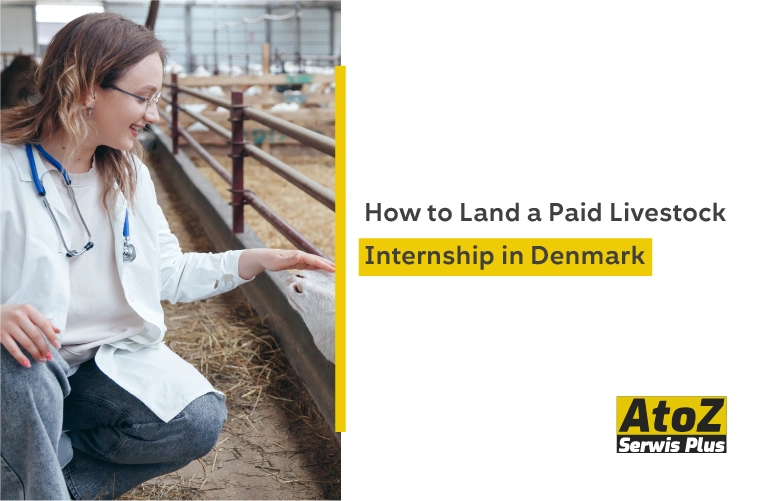

European skilled and unskilled workers types of job
It's never simple to start over in a new country. Some people may find it difficult to comprehend an immigrant's many characteristics, while others may choose to ignore them. Thank goodness, the European Union created specific laws to ease the burden of a future immigrant.
One must be aware of the procedures required to work legally in the European Union when wishing to begin a new chapter there or when merely searching for new opportunities abroad.
People who wish to transform their nation can work in any field and still be influential and valuable. The stereotype of an immigrant only doing low-paying, monotonous job has long since disappeared. People from various backgrounds can perform tasks and live up to standards that call for any combination of abilities. They only require an opportunity to excel.
However, in order to properly accommodate such people, strict guidelines and practises must be followed.
The means by which people can access the EU market vary in line with the different types of labor. Therefore, before discussing skilled and unskilled work, it is important to discuss the barriers a potential employee must overcome in order to accept a job offer legally and formally. especially because the path and process for first obtaining the work permit are greatly influenced by the labour status.
Visas, a key aspect of the immigrants’ labor
The immigrants-to-be need to apply to the competent national authorities for a residence permit or a long-stay visa. The immigration services of the host EU country will decide on the application as soon as it is possible, and within a maximum of 90 days.
There are a few types of the work visas. Depending both on a status and skills of a future citizen the laws of the immigration process differ greatly. Understanding the definition of such is the key factor in validation of the individual as an immigrant.
This instrument depends on the certified abilities, skills and qualifications of the potential employee. Thus, the variety of options corresponds directly to whether one can be considered a high-skilled, semi-skilled, low-skilled, or even unskilled, worker.
How do the various worker types differ?
We could delve further into particular types of labour if we knew more about the routes to legally providing employment. Each term used is associated with a specific educational and professional background, which can have a direct impact on how simple or difficult the hiring process is.
High-skilled labor
The primary distinction between skilled and unskilled labour is the need for specialised training for skilled workers as opposed to unskilled laborers. Additionally, there is a greater need for highly specialised professionals than for unskilled workers as a result of the numerous technological advancements that have been made.
The main difference between skilled and unskilled labour is that skilled workers require specialised training, whereas unskilled labourers do not. Additionally, due to the numerous technological advancements that have been made, there is a greater need for highly specialised professionals than for unskilled workers.
It is crucial to see these people as a source of development and new opportunities. Such workers shouldn't be viewed as posing a threat to an ordinary citizen of the nation they attempt to enter.
Some examples of types of laborers and potential jobs of skilled labor:
- Upholstery / furniture upholstery / upholsterer’s assistant,
- Insulator – industrial fitter,
- Electrician for electrical installations,
- A smelter on induction furnaces,
- Electromechanic,
- Conventional turner,
- Welder (Mig, Mag) / assistant welder,
- Maintenance specialist (heavy industry),
- Locksmith,
- Carpenter,
- Cutters,
- Seamstress.
Low-skilled work
Jobs classified as semi-skilled labour need a certain set of skills and training, but not a high level of education or specialised training. A person working in a semi-skilled labour position is probably expected to perform routine tasks while keeping an eye on the calibre of their output.
Employees in semi-skilled roles might also be expected to possess or learn customer-facing competencies like effective communication, empathy, and professionalism. Understanding what positions are classified as semi-skilled labour can help in determining which skills the candidate may need to focus on and which they already possess. Semi-skilled jobs require employees to go through some training and develop skills.
Semi-skilled work is frequently contrasted with skilled work and unskilled work. However, positions requiring both specialised skill sets and advanced training are referred to as skilled labour. Depending on the industry, this could mean different things because it's difficult to make a generalisation that would apply to all jobs at once.
Some examples of semi-skilled labor positions:
- Line quality controllers,
- CNC operator (Fanuc and Siemens control systems),
- Electricians,
- Builders,
- Facility Management Specialists,
- Welders.
Low-skilled and unskilled labor
High-skilled professionals in the EU have numerous opportunities, as was previously demonstrated. Are you curious what unskilled labour entails? This phrase describes employment that are accessible to most people and don't call for a specific educational background. Limited responsibility may be involved with unskilled labour tasks, and candidates can typically pick up the necessary abilities through on-the-job training.
Unskilled workers are valued by many businesses because they keep their operations running smoothly and might make up a sizable amount of their workforce. Jobs that require operating basic machinery or doing repetitive tasks may be found to be unskilled. Unfortunately, because unskilled labour doesn't call for a specific set of abilities or qualifications, it rarely offers wages as high as those of skilled and semi-skilled laborers.
Some examples of unskilled workers positions:
- Food preparation line workers, kitchen help, and fast-food employees.
- Hotel or residence housekeepers.
- Janitorial workers or cleaners.
- Seasonal associates.
- Stocking associates.
- Line operators.
- Semi-automatic sewing machine operators.
- Waste management workers.
Future perspective
According to the report “Skilled Migration: A Sign of Europe’s Divide or Integration?” , the European countries’ economies have experienced profound changes since the early 1990s, in the context of global economic integration and increasing international migration.
The number of foreign-born residents in the European Union has more than doubled since 1990, reaching 60 million in 2019. As a result, the EU hosts close to one-quarter of all the world’s migrants. A sizable share of migrants in the EU is from other EU member countries (21 million).
By destination area, most Eastern EU emigrants migrate to the Western EU countries, whereas Western EU emigrants remain within the region or immigrate to non-EU countries, mostly more developed non-EU OECD countries.
The rise in skilled migration to the EU has been even more pronounced over the past 15 years, reaching 13 million of tertiary-educated migrants in 2019.) High-skilled migrants in the EU tend to be younger than the average migrant population. A higher share of tertiary-educated migrants from Eastern EU countries are women, while there is broader gender parity among skilled migrants from the Western EU.
Skilled workers migrants tend to self-select into occupations with a different task content than natives. Occupational downgrading is a relevant phenomenon, which particularly affects qualified migrants from Eastern EU countries. When working in high-skilled occupations, migrants tend to perform more analytical tasks, while natives are concentrated in communication-oriented tasks.
Information and communication technology represents one of the largest shares of occupation for educated migrants, claim the authors of the report. To fully understand skilled labor, it is important to realize what unskilled labor is.
As shown above, the work environment of EU is open to many different kinds of people with different sets of skills. Both professionals and those of lesser experience may find their very own place in a market that is a part of the European Union; connecting people of many backgrounds and abilities has always been its main goal.
Moreover, around 9% of German population consists of expats, and that is only one example. The number of people residing in an EU Member State with citizenship of a non-member country on 1 January 2021 was 23.7 million, representing 5.3% of the EU population. This proves that the European job market is continuously growing and the number of migrants joining it keeps rising.
Are you planning to employ foreigners?
From the outset of our cooperation, we offer you assistance with a thorough needs analysis and recruitment of employees.
Discover the advantages of working with AtoZ Serwis Plus
How to work in Poland on qualification?
Do you want to find a suitable job in Poland under your qualification? Don’t work as an unskilled worker! We advise you to fill out this form. As soon as we have a vacancy corresponding to your requirements and qualifications, we will contact you immediately. Tell me as much as you can about yourself .
On average, every minute on our page about four employers fill out an application to search for employees. Most of them are looking for highly skilled workers.
We provide new vacancies first of all to people who will fill in this questionnaire. Also we do work permit. Please note that we communicate only with selected candidates. If our recruitment specialist will not reply to you, it’s mean we can’t hire you.
We provide new vacancies first of all to people who will fill in this questionnaire.
Are you looking for employees? We will find the best candidates for you
We recruit employees from Ukraine, Russia, Belarus and Asia (Indonesia, Philippines, Vietnam)
We treat each of our clients individually, as the employees we recruit for you. We will not be able to accurately determine the cost of our services without knowing your needs and requirements for candidates. Preparing a job is always the main task at the beginning of recruitment. Please fill in all the fields as much as possible, as it is important for us as well as for the job applicants.
Add a job offer
Fill in the form (employer's questionnaire). We will select the optimal form of cooperation with you. fill in this questionnaire.
Choose an offer
After completing the employer's questionnaire, we will prepare an offer in the field of services: recruitment, employee leasing or outsourcing of (personnel) services.
You have an employee
We will find the right candidate for your business and guarantee good conditions for both parties.
After filling out the form you will receive an offer within the services:
Recruitment – recruiting with a one-time fee for employment by the employer of the candidate
Leasing of employees on the basis of the law on temporary work
Outsourcing of services (personnel) – some tasks in the company, the State can entrust you to us (we specialise like in the metallurgical industry and road construction)
Also, for people who cope with their duties, we help to get a residence card in Poland.
Important! Due to problems with issuing visas to people from the Asian region, many employers are more inclined to wait for Belarusians and Ukrainians to work in Poland. There is the only option for people from Asia who have not yet been in Poland and do not have documents for legal stay (such as a temporary stay card) It’s Polish employment agencies!
Polish employment agencies have a leasing system, because they have signed contracts with employers for permanent recruitment. We recruit people without stopping. And in this case, we can wait for workers from the region of Asia as employers.

















